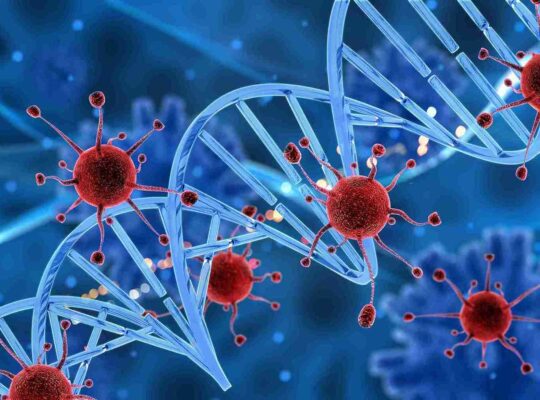What is Multiple Myeloma?
Multiple Myeloma is cancer that affects the Plasma cells, which are a form of white blood cells that is produced in the bone marrow. These cells are specialized in the production of antibodies which assist in the combat of infections. The disease affects the bone marrow where cancerous plasma cells proliferate at the expense of healthy blood cells. This in turn can cause anemia, deterioration of bone structure and altered immunity.
Symptoms of Multiple Myeloma
Symptoms of multiple myeloma can vary widely among individuals. Common symptoms include:
- Bone Pain: This is often felt in the back, ribs, or hips. It can be persistent and severe.
- Frequent Infections: The immune system becomes compromised, making the body more susceptible to infections.
- Fatigue and Weakness: This can result from anemia caused by the overproduction of cancerous plasma cells.
- Unexplained Weight Loss: Sudden and unexplained weight loss can be a sign of multiple myeloma.
- Nausea and Constipation: High levels of calcium in the blood (hypercalcemia) can cause digestive issues.
- Increased Thirst and Urination: Hypercalcemia can also lead to excessive thirst and frequent urination.
These symptoms may develop slowly and worsen over time. If you experience any of these symptoms, it’s important to consult a healthcare provider.
How is Multiple Myeloma Diagnosed?
Diagnosing multiple myeloma involves several tests. These tests help confirm the presence of cancer and determine the stage of the disease. Common diagnostic tests include:
- Blood Tests: These tests check for abnormal proteins (M proteins) produced by myeloma cells and elevated calcium levels.
- Urine Tests: These tests detect Bence Jones proteins, which are light chains of antibodies produced by myeloma cells.
- Imaging Tests: X-rays, MRIs, and CT scans are used to detect bone lesions and areas of bone damage.
- Bone Marrow Biopsy: A sample of bone marrow is taken to examine the number of myeloma cells present.
Early diagnosis is essential for effective treatment. If multiple myeloma is suspected, a healthcare provider will typically refer you to a hematologist-oncologist.
Treatment Options for Multiple Myeloma
There are several treatment options available for multiple myeloma. The choice of treatment depends on the stage of the disease, the patient’s overall health, and other factors. Common treatments include:
- Chemotherapy: This treatment uses drugs to kill rapidly dividing cancer cells. Chemotherapy is often used in combination with other treatments.
- Radiation Therapy: High-energy rays are used to target and kill cancer cells in specific areas, such as bones affected by myeloma.
- Stem Cell Transplant: This procedure involves replacing damaged bone marrow with healthy stem cells. It can be autologous (using the patient’s own cells) or allogeneic (using donor cells).
- Targeted Therapy: These drugs target specific proteins on myeloma cells, interfering with their growth and survival.
- Immunotherapy: This treatment boosts the immune system’s ability to fight cancer. It includes monoclonal antibodies and CAR-T cell therapy.
Doctors may recommend a combination of treatments based on the patient’s condition. The goal of treatment is to control the disease, relieve symptoms, and improve quality of life.
Managing Multiple Myeloma
Living with multiple myeloma can be challenging, but there are steps you can take to manage the disease and maintain a good quality of life:
- Follow Your Treatment Plan: Adhere to the treatment regimen prescribed by your healthcare provider. This may include medications, therapies, and regular check-ups.
- Maintain a Healthy Diet: Eat a balanced diet rich in fruits, vegetables, lean proteins, and whole grains. This can help support your overall health and immune function.
- Stay Active: Engage in gentle exercises, such as walking or stretching, to maintain physical strength and flexibility.
- Get Plenty of Rest: Ensure you get enough sleep and rest to help your body recover and cope with treatment.
- Avoid Infections: Practice good hygiene, avoid large crowds, and stay away from people who are sick to reduce your risk of infections.
Emotional support is also crucial. Surround yourself with supportive family and friends. Consider joining a support group where you can connect with others who are facing similar challenges.
Conclusion
Multiple Myeloma can be deadly, but it can be treated if diagnosed early and the treatment follows a proper procedure and many who suffer from it can live normal happy lives. Education of your health status and cooperation with your healthcare provider are the elements of this process. So it is crucial to stick to the treatment plan, maintain general health, and get help when required. Combined, it can assist you in living a better life with multiple myeloma or even assisting those diagnosed with cancer generally.
Frequently Asked Questions about Multiple Myeloma
What is multiple myeloma?
Multiple myeloma is one of the blood cancer diseases that affects plasma cells in the bone marrow. These cells are involved in the production of antibodies hence are important in the fight against infections.
What are the common symptoms of multiple myeloma?
The unity of patient complaints is bone pain; recurrent infections; fever; cachexia; asthenia; anorexia; and hypercalciuria manifested by polydipsia and polyuria
How is multiple myeloma diagnosed?
Other tests that can be carried out include, blood and urine tests, X-ray, MRI, CT scan and bone marrow biopsy to detect presence of cancerous cells.
What are the treatment options for multiple myeloma?
It consists of anti-cancer drugs, radiotherapy, bone marrow or stem cell replacement therapy, ‘smart drugs’- which are molecules designed to pinpoint cancerous cells-and antibodies-. It is common that several treatments will be employed simultaneously or successively depending on the state of the patient.
What causes multiple myeloma?
The real cause is not well understood but other factors could include; age, family history, chemicals, and radiation among others.
Can multiple myeloma be cured?
Multiple myeloma is not yet curable, but its progress can be regulated, and various aspects can be alleviated making the patient’s life more comfortable.
How does multiple myeloma affect the bones?
It can also result in the formation and pain associated with the multiple myeloma producing lesions and compromising the bone strength of affected individuals leading to fractures.
What lifestyle changes can help manage multiple myeloma?
This paper also considered various measures to control the disease and enhance patients’ health, such as proper nutrition, a favorable lifestyle, sufficient sleep, and protective measures against infections, as well as adherence to all possible treatment recommendations.
What is a stem cell transplant, and how does it help?
It involves receiving stem cells in lieu of damaged bone marrow, this is a stem cell transplant. It can correct the problem of abnormal blood cell count and enhance the impact of other kinds of treatments.
Where can I find support if I have multiple myeloma?
There is assistance from healthcare; More support can be gotten from support groups’; friends and family. It is advisable to undergo a support group so you can find emotional support from people with the same experience as you.



